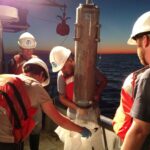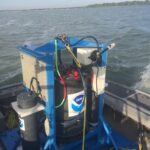Last month, scientists from GLERL, the Cooperative Institute for Limnology and Ecosystems Research (CILER), and other university partners took the research vessel Laurentian for a multi-day cruise on Lake Michigan as part of seasonal sampling to assess the spatial organization … Continue reading

October 20, 2016
by Kaye LaFond
1 Comment


